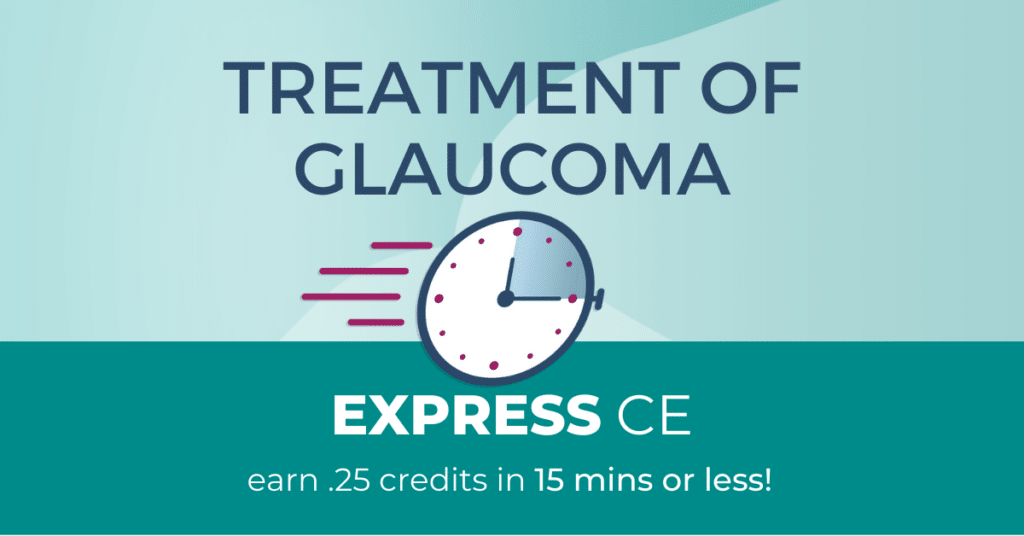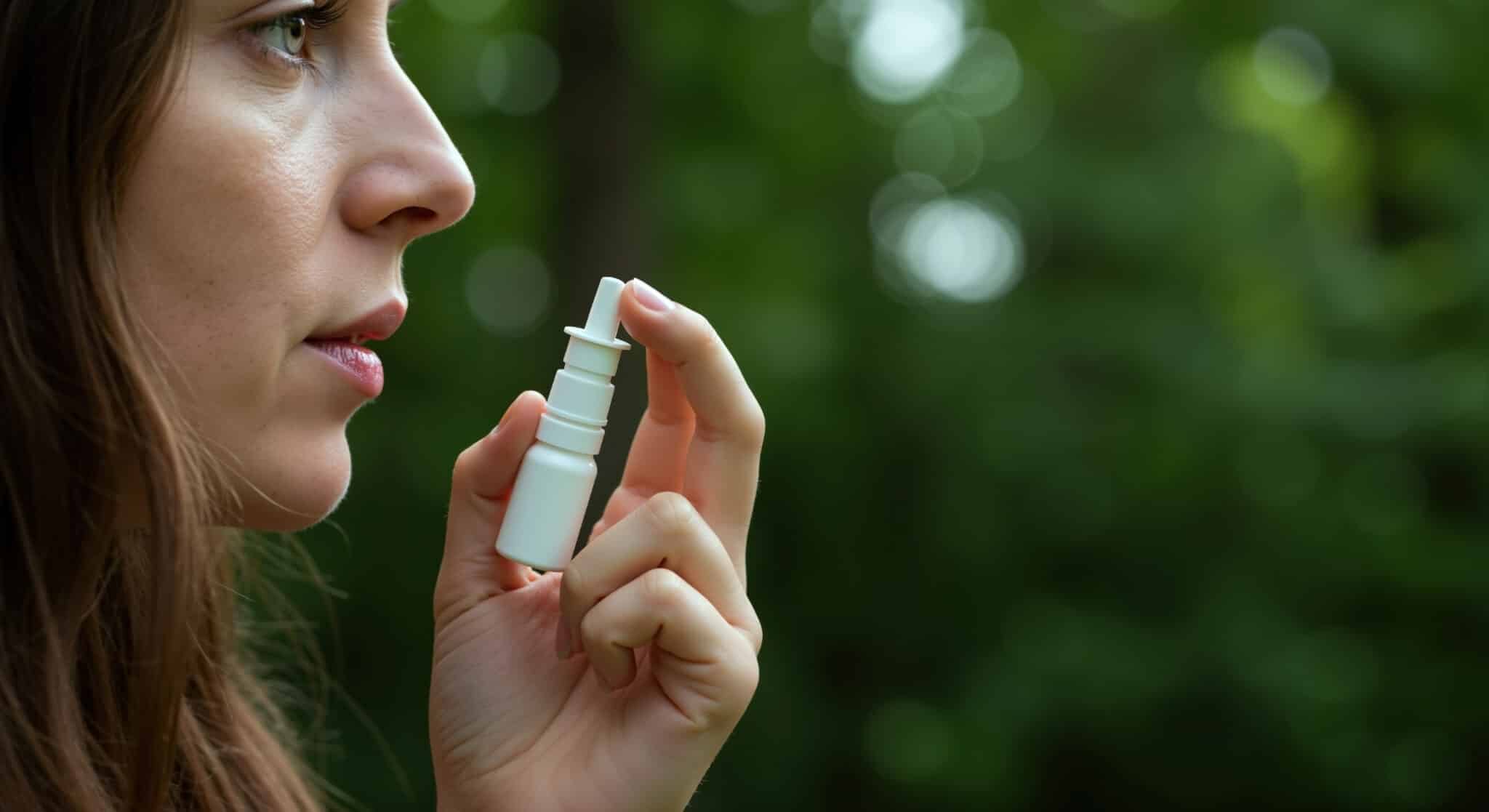As part of freeCE‘s effort to bring free continuing education for pharmacists and pharmacy technicians, we are ungating some of our Micro CE content from Pete Kreckel. We hope you enjoy learning from this magnificent instructor.
Table of Contents
Overview of Glaucoma Therapies
Pete Kreckel, MicroCE, 0.25 hour
When I am explaining glaucoma drugs to my student pharmacists or student PA’s I use the analogy of a bathtub filling up with water, and a washcloth plugging the drain. As the tub is about to overflow, what corrective action would you take?
Step one is to shut the water off; step two is to unplug the drain. These two simple steps sum up how we treat glaucoma. We can shut the water off (decrease formation of the aqueous humor) or we can unclog the drain (facilitate drainage through the canal of Schlemm.
Glaucoma Medications that Decrease Production of Aqueous Humor:
BETA-ADRENORECEPTOR ANTAGONISTS [YELLOW or BLUE CAPS]
Mechanism:
- Decrease production of aqueous humor by the ciliary body without producing substantial effects on aqueous humor outflow
- Beta activity decreases during the night, so these drugs might not be effective while patients are asleep
- NO EFFECTon pupil size or accommodation
Indications for Use:
- Open angle glaucoma
- May be used alone, or in combination with mitotics
Warnings/Precautions/Adverse Effects
- Stinging upon application
- Dry eyes
- Only betaxolol is beta selective: Caution if using other beta blockers in cardio & pulmonary (specifically asthma) patients
- May cause increased risk for bronchospasm, or bradycardia
- Caution in patients with decreased cardiac function
- Other side effects: depression, lethargy, dizziness, vertigo headaches etc.
- If combining therapy with epinephrine: administer epinephrine 4 hours after using beta blocker
Drug Interactions
- Oral beta blockers: may potentiate systemic effect of decreased heart rate
- Digoxin and non-dihydro calcium channel blockers: may prolong atrioventricular conduction time and increase risk of hypotension or bradycardia
Patient Education
- Bradycardia and bronchospasm are common signs of overdose
- Do not touch dropper directly to the eye
Representative products:
- Betaxolol (Betoptic®-S) 0.25% suspension
- Dose: 1 drop twice daily
- Beta-1 selective: affects cardiovascular parameters
- Timolol (Timoptic®-XE) 0.25% and 0.5% gel forming solution
- Dose: 1 drop once daily
- Timolol (Timoptic®) 0.25% and 0.5% solution
- Dose: 1 drop twice daily
- Timolol is non-selective: affects cardio and pulmonary parameters
- Levobunolol (Betagan®) 0.25% and 0.5% solution
- Dose: 1 to 2 drops once daily; may increase to 1 drop twice daily
- Levobunolol is non-selective: affects cardio and pulmonary parameters
- Carteolol (Ocupress®) 1% solution
- 1 drop twice daily
- Carteolol is non-selective: affects cardio & pulmonary parameters
ALPHA-ADRENORECEPTOR AGONISTS (SYMPATHOMIMETICS) [PURPLE CAPS]
Mechanism:
- The alpha agonists: Brimonidine, dipivefrin, & epinephrine decrease formation of aqueous humor AND increase outflow of aqueous humor
- Apraclonidine (Iopidine): decreases aqueous production with NO effect on outflow
Indications for Use:
- Apraclonidine, brimonidine, dipivefrin and epinephrine:
- Open-angle glaucoma
Warnings/Precautions/ Adverse Effects:
- Minimal effects on blood pressure
- Caution with severe cardiovascular disease
- Caution in depression & Raynaud’s phenomenon
- May cause fatigue/drowsiness in some patients
Patient Education:
- May cause fatigue or drowsiness
Representative products
- Brimonidine 0.15% (Alphagan-P®) solution
- CAUTION: new additional strength 0.1% (brand only)
- Dosage: 1 drop three times daily (preferably Q8H)
- Brimonidine 0.025% (Lumify®) is OTC for correction of red eyes not glaucoma
CARBONIC ANHYDRASE INHIBITORS [ORANGE CAPS]
Mechanism:
- Inhibits carbonic anhydrase (CA) in the ciliary process of the eye reducing the production of bicarbonate ions leading to a decrease in aqueous humor production
Indications for Use:
- Reduction of intraocular pressure in patients with open-angle glaucoma
Warnings/Precautions/Adverse Effects:
- Sulfonamide derivatives that are absorbed systemically may cause allergic reaction: caution for hypersensitivity reactions or Stevens-Johnson syndrome (SJS) like reactions
- Temporary blurring of vision: use caution while driving
Patient Education:
- These are sulfa drugs. Watch for signs of allergy!
- Horrible taste can be mediated by using punctal occlusion (blockage of tear duct)
- Pinch bridge of nose for 30 seconds after administration
Representative Products:
- Dorzolamide (Trusopt®) 2% solution
- Dosage: 1 drop three times daily
- Brinzolamide (Azopt®) 1% suspension
- Dosage: 1 drop three times daily
- Acetazolamide (Diamox®) oral
- Dose: 250 to 1000 mg daily
- Available as 250 mg tablets or 500 mg SR capsules
- Very useful as adjunct therapy
- Watch for hypokalemia: consider supplementation with K+
- Dose: 250 to 1000 mg daily
Although we rarely dispense pilocarpine, it reminds me of my grandfather. As a little kid growing up, my Grandpa lived only one block away, and I spent a lot of time at his house. He was a blacksmith, tall and thin and had the most gorgeous blue eyes, none of these characteristics he shared with me!
As he got older, he struggled more with his eyesight. He used pilocarpine eye drops several times a day to manage his glaucoma. Grandpa would sit on the front porch to read his large edition of the Reader’s Digest or the newspaper. He always said the hardest part of growing was twofold, the loss of his friends and his eyesight. At age 77 he gave up his driver’s license and sold his 1952 Chevy truck.
One day he was telling me he was sitting by the window watching the birds at his bird feeder. He described a bright red cardinal, taking a sunflower seed in his beak and breaking it open and eating the kernel inside. What amazed me is how this guy who complained of failing eyesight could see such detail with such clarity.
As a pharmacist it all makes sense. Grandpa had pinpoint pupils from the pilocarpine drops that made him struggle to see if there was not sufficient light. As long it was a bright and sunny day Grandpa could see such minor details as the birds eating at his feeder.
Glaucoma Medications that Facilitate Drainage of Aqueous Humor MIOTICS [GREEN CAPS]
Pilocarpine
Mechanism:
- Parasympathomimetic drug which duplicates the muscarinic effects of acetylcholine
- Produces pupillary constriction, stimulates ciliary muscles, increases aqueous humor outflow
- It causes increased tension on the scleral spur and opening of the trabecular meshwork spaces to facilitate outflow of aqueous humor
Indications for Use:
- Decrease intraocular pressure due to glaucoma
- May be combined with beta blockers, carbonic anhydrase inhibitors, sympathomimetics, or hyperosmotic agents
- May be acceptable alternative for patients that cannot tolerate cardiovascular side effects of beta blockers
Warnings/Precautions/Adverse effects
- Miotics can induce vision changes or myopia (near-sightedness) in younger patients
- Miotics causes pupillary constriction that compromises vision in patients especially with cataracts
- Stinging and burning on application
- Decreased visual acuity
- Headache
- Decreased night vision
Patient Education:
- Caution driving at night; vision may be affected
Representative Products:
- Pilocarpine (Vuity®) 0.25%, 0.5%, 1%, 2%, 3%, 4%, 5%, 6%, 8%, 10% solution
- Dosage: 1 drop up to four times daily; initiate on 1% and increase strength and dose based on intraocular pressure
- Pilocarpine hydrochloride(Pilopine HS®) 4% ophthalmic gel
- Apply ½ inch ribbon in conjunctival sac once daily at bedtime (HS)
- Pilocarpine (Ocusert Pilo) intraocular system
- Ocular system placed in eye
- Changed weekly
- Releases 20 mcg/hr for 1 week
PROSTANOIDS [TURQUOISE CAPS]
(considered first line by most ophthalmologists)
Mechanism:
- Reduces intraocular pressure by increasing outflow of aqueous humor
Indications for Use:
- Open angle glaucoma
Warnings/Precautions/Adverse Effects:
- May discolor iris blue eyes to brown
- Color change may be permanent
- Increases length, thickness and pigmentation of eyelashes
- Eyelid skin darkening
Patient Education:
- Color changes to the iris
- Eyelash and eyelid changes
Representative Products:
- Latanoprost (Xalatan®) 0.005% solution
- Dosage: 1 drop once daily in the evening
- Keep at room temperature for up to 6 weeks; keep refrigerated in the pharmacy before dispensing
- Travoprost (Travatan-Z®) 0.004% solution
- Dosage: 1 drop once daily in the evening
- Bimatroprost (Lumigan®) 0.01% solution
- Dosage: 1 drop once daily in the evening
- Tafluprost (Zioptan ®) solution
- Dosage: 1 drop once daily in the evening
- Preservative free
- Available in single use containers
- Bimatoprost (Latisse®)
- The first drug approved for increasing eyelash growth
- Patients using these prostaglandin eye drops noticed thicker and longer eyelashes
- Takes about 8 weeks to work
- Eyelashes return to “normal” a few weeks or months after stopping treatment
- Darkens the iris and skin around the eyes
- The skin darkening may be reversible while the iris darkening usually is not
- Wait 15 minutes before re-inserting contact lens
- Latanoprostene bunod (Vyzulta®) solution 0.024%
- Metabolized into latanoprost and nitric oxide increasing fluid outflow by two pathways
- Not much more effective than latanoprost
- Cost is $180 for 2.5ml vs $12 for latanoprost 2.5ml.
RHO KINASE INHIBITORS [WHITE CAPS]
Mechanism:
- Rho kinase inhibitors increase fluid outflow through the trabecular meshwork
- Considered to be an add on to therapy, as it modestly decreases IOP
Indication for Use:
- Reduction of elevated intraocular pressure in patients with open-angle glaucoma
Warnings/Precautions/Adverse Effects:
- The most common side effects are conjunctival (eye) redness, golden brown deposits in the cornea (covering of the colored portion of the eye), pain with drug application, conjunctival (eye) bleeding, blurred or decreased vision, increased tearing and redness of the eyelid
Patient Education:
- Remove contacts before administration and wait 15 minutes before reinserting
Representative Products:
- Netarsudil (Rhophressa®) 0.02% solution
- Dose: 1 drop once daily in the evening
- Rhopressa modestly lowers intraocular pressure
- Expensive product at $230.00 per 2.5ml bottle
- Refrigerate until opening then may be stored at room temperature up to 6 weeks
- Netarsudil 0.2% combined with latanoprost 0.005% (Rocklatan®) solution
- Dose: 1 drop once daily in the evening
- MAX dose: 1 drop daily
Color Codes for Topical Ocular Medications
Class | Color | Examples |
Anti-infectives | Tan | Moxifloxacin, ofloxacin |
Anti-inflammatories/steroids | Pink | Prednisolone |
Mydriatics and cycloplegics | Red | Atropine, tropicamide |
Nonsteroidal anti-inflammatories | Gray | Bromfenac, ketorlac |
Miotics | Dark Green | Pilocarpine |
Beta-blockers | Yellow | Timolol |
Beta-blocker combinations | Dark Blue | Brimonidine and timolol |
Adrenergic agonists | Purple | Brimonidine |
Carbonic anhydrase inhibitors | Orange | Dorzolamide, brinzolamide |
Prostaglandin analogues | Turquoise | Latanoprost, travoprost |
Have a great day on the bench!!






